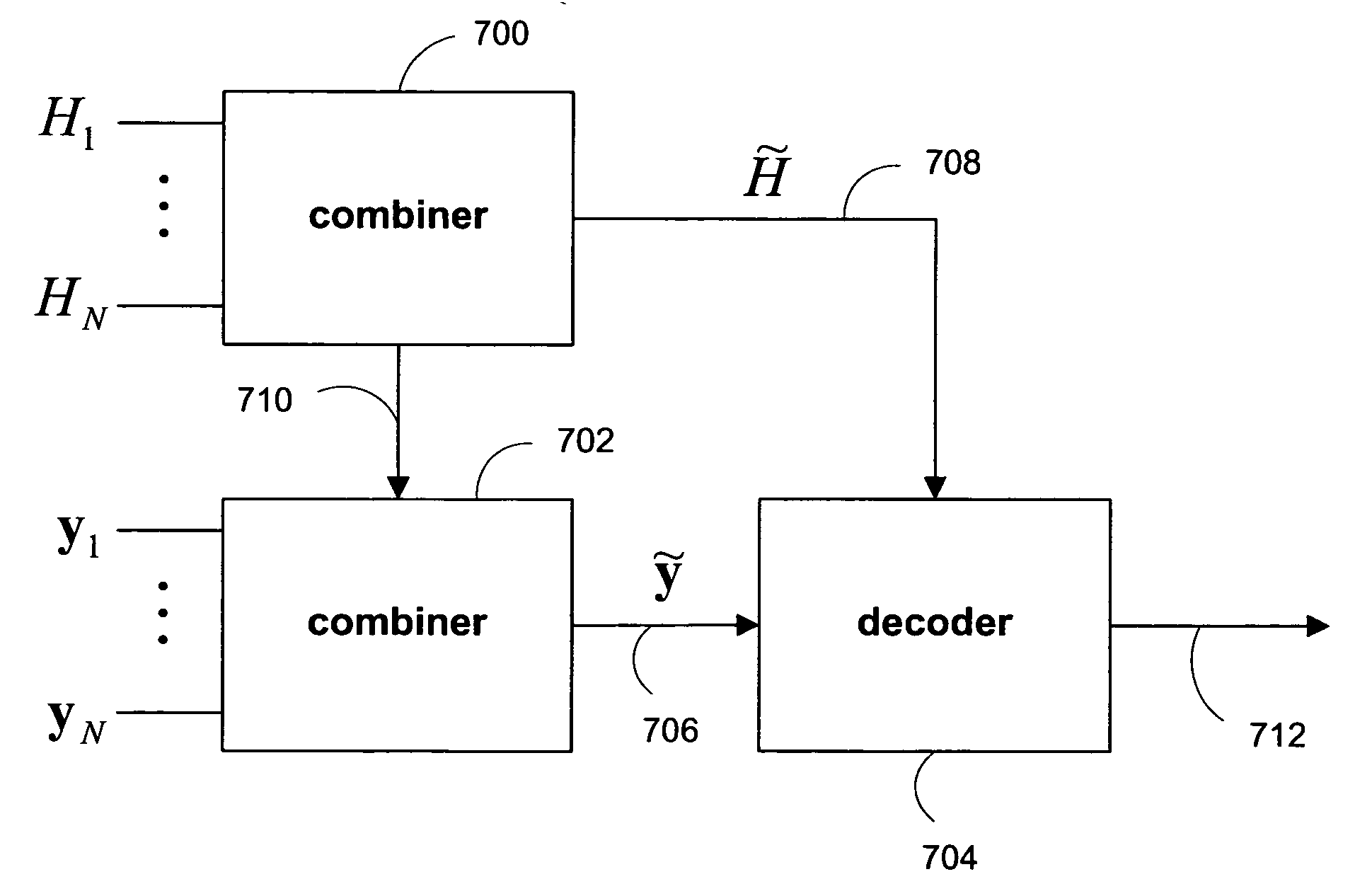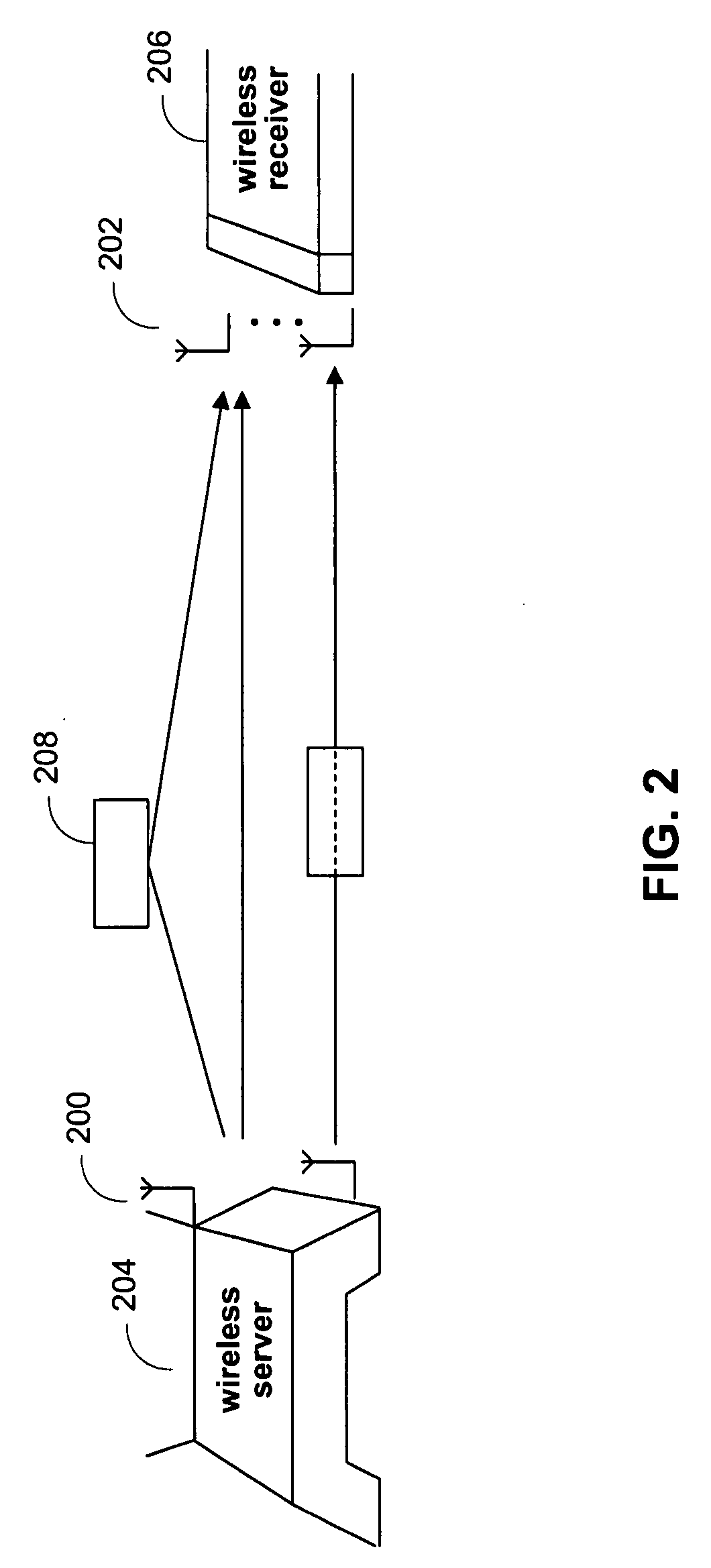Concatenation-assisted symbol-level combining for MIMO systems with HARQ and/or repetition coding
- Summary
- Abstract
- Description
- Claims
- Application Information
AI Technical Summary
Benefits of technology
Problems solved by technology
Method used
Image
Examples
Embodiment Construction
[0041]The disclosed invention provides a technique in a multiple-input multiple-output data transmission or storage system to decode a signal vector at a receiver, where the receiver may receive multiple signal vectors from the same transmitted signal vector.
[0042]FIG. 1 shows an illustration of a basic data transmission or storage system in accordance with one embodiment of the present invention. Data, typically grouped into packets, is sent from transmitter 102 to receiver 112. During transmission, the signals may be altered by a transmission medium, represented by channel 106, and additive noise sources 108. Transmitter 102 has Nt outputs 104 and receiver 112 has Nr inputs 110, so channel 106 is modeled as a multiple-input multiple-output (MIMO) system with Nt inputs and Nr outputs. The Nt input and Nr output dimensions may be implemented using multiple time, frequency, or spatial dimensions, or any combination of such dimensions.
[0043]In one embodiment, FIG. 1 represents a wirel...
PUM
 Login to View More
Login to View More Abstract
Description
Claims
Application Information
 Login to View More
Login to View More - R&D
- Intellectual Property
- Life Sciences
- Materials
- Tech Scout
- Unparalleled Data Quality
- Higher Quality Content
- 60% Fewer Hallucinations
Browse by: Latest US Patents, China's latest patents, Technical Efficacy Thesaurus, Application Domain, Technology Topic, Popular Technical Reports.
© 2025 PatSnap. All rights reserved.Legal|Privacy policy|Modern Slavery Act Transparency Statement|Sitemap|About US| Contact US: help@patsnap.com



